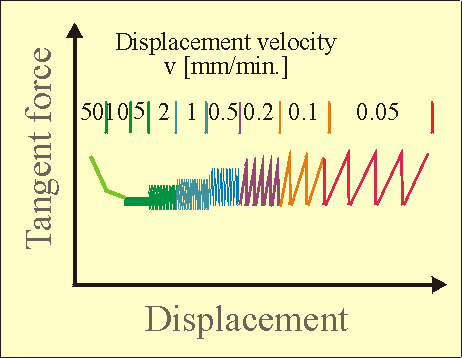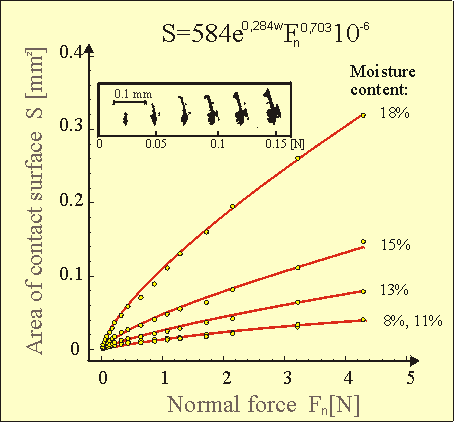Wall friction
 Friction of grain against construction materials depends on numerous factors, which the most important are: type of material, moisture content of grain, normal pressure, sliding path, orientation of grain against direction of sliding, air temperature and relative humidity and grain genus and variety. Coefficients of friction of various genera and varieties of grain differ sometimes distinctly. One of the reasons for this variability are differences in roughness and texture of grains surfaces. Grain moisture content is also considered one of the main reasons for variability in grain coefficient of friction. In general for cereal grains, coefficient of friction increases with an increase in moisture content, particularly above 13%. However for some grains minimum was observed for moisture contents below 15%.
Friction of grain against construction materials depends on numerous factors, which the most important are: type of material, moisture content of grain, normal pressure, sliding path, orientation of grain against direction of sliding, air temperature and relative humidity and grain genus and variety. Coefficients of friction of various genera and varieties of grain differ sometimes distinctly. One of the reasons for this variability are differences in roughness and texture of grains surfaces. Grain moisture content is also considered one of the main reasons for variability in grain coefficient of friction. In general for cereal grains, coefficient of friction increases with an increase in moisture content, particularly above 13%. However for some grains minimum was observed for moisture contents below 15%.

Frictional interaction between grain and the bin material may change the value of coefficient of friction. During prolonged sliding, cutin a wax-like substance from the grain seed coat accumulates on the smooth contact surface. Cutin acts as a lubricant, that smoothes the contact surface and changes its frictional properties. Investigations on a smooth-walled model silo filled with wheat showed wear-in effect that resulted in 70% decrease in the wall coefficient of friction.
Molenda M., Horabik J., Ross I.J.: Wear-in effects on loads and flow in a smooth-wall bin. Trans. of the ASAE, 39(1), 225-231, 1996.
<<

Conditions with low sliding velocities lead to frictional vibrations (stick-slip effect). Vibrations appear as a saw-tooth shaped disturbance on the frictional force displacement curve. This behavior usually disappears as the velocity increases. The velocity where stick-slip behavior end is termed the critical velocity. Frictional vibrations are often observed when unloading grain from silos. The figure presents a typical relationship of amplitude and frequency of vibration against displacement obtained by Bucklin et al. (1996). The authors found that in the case of friction of dry wheat against a galvanized steel surface, stick-slip disappeared at a velocity of approximately 10 mm/min. No significant influence of normal pressure on critical velocity was found.
Bucklin R.A., Molenda M., Bridges T.C., Ross I.J.: Slip-stick frictional behavior of wheat on galvanized steel. Trans. of the ASAE, 39(2), 649-653, 1996.
Interactions on area of frictional contact

Large deformability in particles and strong dependence of their mechanical properties on moisture content are characteristic features of granular materials of biological origin. Description of friction of these materials requires consideration of interaction not in contact points (as for rigid particles) but on contact areas. Experimental investigations have shown that surface contact area of a kernel of cereal grain with flat surface increase slower than a linear increase in normal load, and increase exponentially with an increase in grain moisture content. Hertz's equation was found to describe adequately the relationship between normal load and surface contact area for a large range of moisture content.
Horabik J., Molenda M.: Force and contact area of wheat grain in friction. J. Agric. Eng. Res., 41(1), 33-42, 1988.
